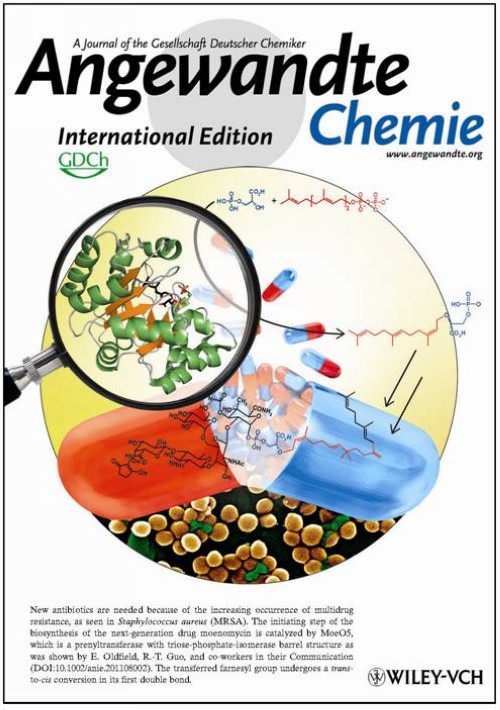The Breakthrough of The Enzymes Generate New Antibiotics Moenomycin
With the long-term using of antibiotics, the increasing occurrence of multidrug resistance bring a lot of difficulties to the clinical treatment. The older antibiotics is losing their effectiveness in slowly, so new clinical antibioties are needed urgently.
Moenomycin is a kind of phosphate glycolipids antibiotic. It can inhibit the activity of the glycosyltransferases in bacterial cell wall synthesis pathway, prevent the synthesis of bacteria cell wall, so as to achieve bacteriostatic effect. At present, moenomycin has not yet applied to clinical, but through the transformation, it is likely to develop into the next generation of clinical antibiotics.
The initiating step of the biosynthesis of the next-generation drug moenomycin is catalyzed by MoeO5 which is a prenyltransferase with triose-phosphate-isomerase barrel structure. It can transfer 15-carbon as a unit in the farnesyl pyrophosphate (FPP) to the 2-hydroxyl in the 3 - phosphoglycerate (3PG).
Recently, Ruiting Guo research group of Tianjin Institute of Industrial Biotechnology Chinese Academy of Sciences(TIB,CAS), UIUC University and Academia Sinica cooperated in the research of MoeO5 , have made breakthrough progress in getting the enzyme protein structure of the MoeO5 and the complex structure of the substrate and production.
The study found that MoeO5 with TIM-barrel configuration belongs to a newly discovered isoprenoid transferase. It can transform the trans substrate (FPP) to the cis product (FPG). MoeO5 crystal texture shows that the pyrophosphoric acid group of FPP combined with the Mg2+ of D41 and D71 amino acid. Compared to other enzyme in the family, the MoeO5 λ 3 loop has four amino acids length than others and it is closed. The FPP's tail formed a u-shaped bending. The combination may be conducive to the formation of the cis products, His97 in λ 3 loop completed the catalytic process with the aid of water molecule.
The study provides the solid foundation for the research and reform of moenomycin. Research results have been accepted by Angewandte Chemie and rated as key cover articles (Back Cover). This work was supported by the National Basic Research Program of China (grant 2011CB710800 to R.T.G.), Tianjin Municipal Science and Technology Commission (10ZCKFSY06000 to R.T.G.), and the National Institutes of Health (AI074233 to E.O.).
Link: http://onlinelibrary.wiley.com/doi/10.1002/ange.201108002/abstract

